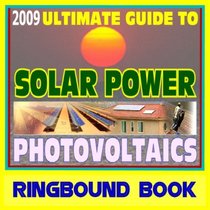Search -
2009 Ultimate Guide to Solar Power and Photovoltaics - Detailed Home System Designs for Power and Heating, Case Studies, Financing, Farms and Ranches, Homebuilding (Ringbound Book)
2009 Ultimate Guide to Solar Power and Photovoltaics Detailed Home System Designs for Power and Heating Case Studies Financing Farms and Ranches Homebuilding - Ringbound Book
Author:
Here is your authoritative guide to all aspects of solar power and photovoltaic energy, from the Federal Government! This unique guide combines the contents of a number of up-to-date Energy Department publications. Contents include: Building America Best Practices Series High-Performance Home Technologies: Solar Thermal and Photovoltaic Systems ... more »
Author:
Here is your authoritative guide to all aspects of solar power and photovoltaic energy, from the Federal Government! This unique guide combines the contents of a number of up-to-date Energy Department publications. Contents include: Building America Best Practices Series High-Performance Home Technologies: Solar Thermal and Photovoltaic Systems ... more »
ISBN-13: 9781422019566
ISBN-10: 142201956X
Publication Date: 10/11/2008
Pages: 274
Rating: ?
ISBN-10: 142201956X
Publication Date: 10/11/2008
Pages: 274
Rating: ?
0 stars, based on 0 rating
Publisher: Progressive Management
Book Type: Ring-bound
Members Wishing: 2
Reviews: Amazon | Write a Review
Book Type: Ring-bound
Members Wishing: 2
Reviews: Amazon | Write a Review




